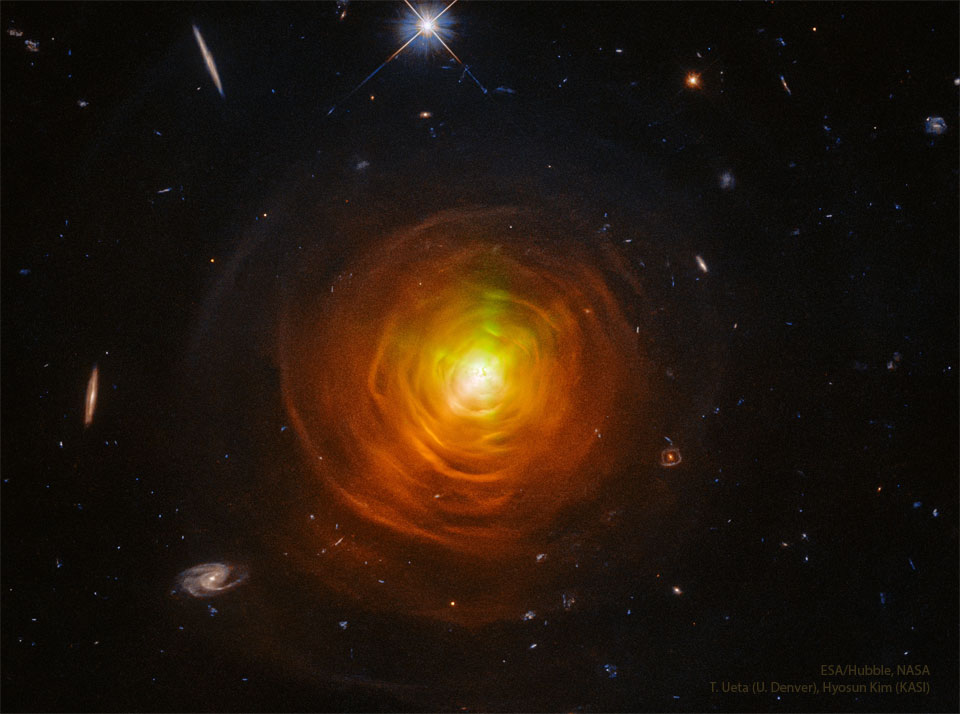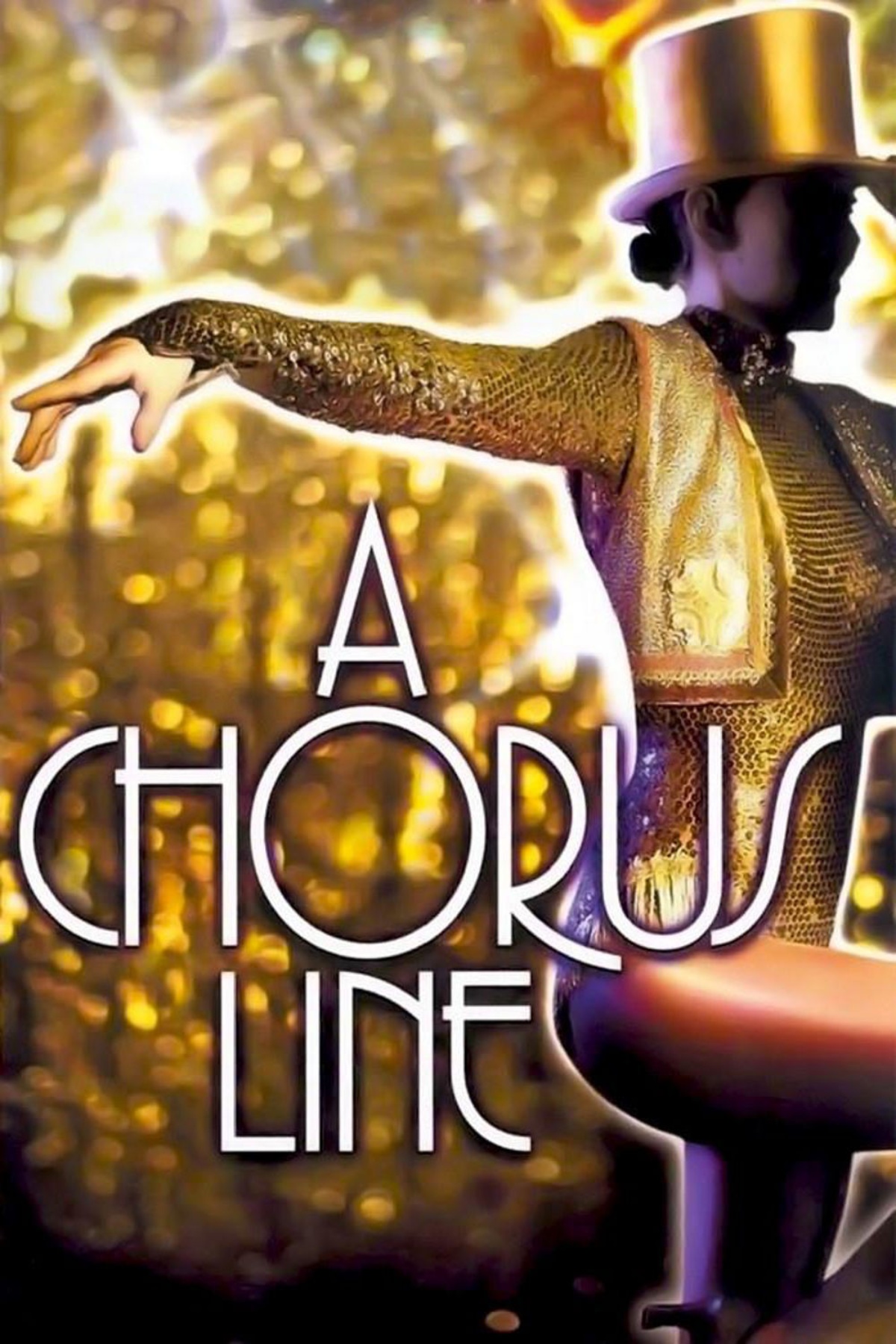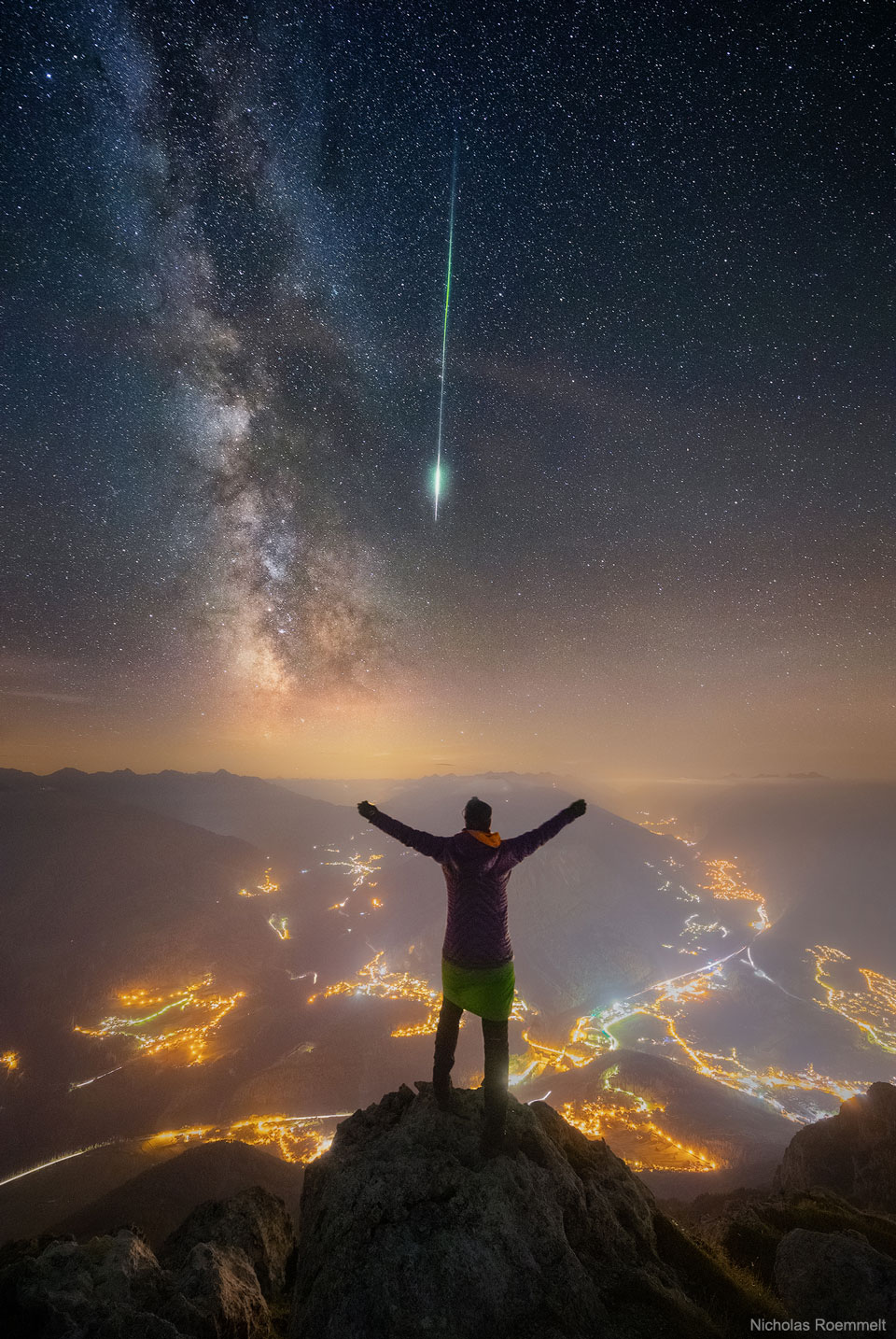Blog
CW Leonis is the closest carbon star, a star that appears orange because of atmospheric carbon dispersed from interior nuclear fusion. But CW Leonis also appears engulfed in a gaseous carbon-rich nebula. What causes the nebula’s complexity is unknown, but its geometry of shells and arcs are surely intriguing. The featured image by the Hubble Space Telescope details this complexity. The low surface gravity of carbon stars enhances their ability to expel carbon and carbon compounds into space. Some of this carbon ends up forming dark dust that is commonly seen in the nebulas of young star-forming regions and the disks of galaxies. Humans and all Earth-based life are carbon-based, and at least some of our carbon was likely once circulating in the atmospheres of near-death stars like carbon stars.

Brian Albert Gordon Auger (born 18 July 1939) is an English jazz rock and rock music keyboardist who specialises in the Hammond organ.
Auger has worked with Rod Stewart, Tony Williams, Jimi Hendrix, John McLaughlin, Sonny Boy Williamson, and Eric Burdon. He incorporated jazz, early British pop, R&B, soul music, and rock into his sound. He has been nominated for a Grammy Award.
In 1965, Auger played on “For Your Love” by The Yardbirds as a session musician. That same year, Auger formed the group The Steampacket with Long John Baldry, Julie Driscoll, Vic Briggs, and Rod Stewart. Due to contractual problems there were no official recordings made by the band; nevertheless, nine tracks were laid down for promotional use in late 1965 and released as an LP in 1970 in France on the BYG label. They were released on a CD by Repertoire Records in 1990 (licensed from Charly Records) as well as 12 live tracks from Live at the Birmingham Town Hall, February 2, 1964. Stewart left in early 1966 and soon thereafter the band broke up.
With Driscoll and the band Trinity, he went on to record a cover version of David Ackles‘ “Road to Cairo” and Bob Dylan’s “This Wheel’s on Fire“, which appeared on Dylan Covered. The latter track was a number 5 pop hit in the UK. In 1969 Auger, Driscoll, and Trinity performed in the United States on the NBC special 33⅓ Revolutions Per Monkee.
more...Lonnie McIntosh (July 18, 1941 – April 21, 2016 West Harrison, Indiana), known as Lonnie Mack, was an American singer-songwriter and guitarist. He was influential in the development of blues rock music and rock guitar soloing.
Mack emerged in 1963 with his breakthrough LP, The Wham of that Memphis Man. It earned him lasting renown as both a blue-eyed soul singer and a lead guitar innovator. The album’s instrumental tracks included two hit singles, “Memphis” and “Wham”. In them, Mack, using “top-quality technique” and “pristine” phrasing, added “edgy, aggressive, loud, and fast” melodies and runs to the predominant chords-and-riffs pattern of early rock guitar. These tracks raised the bar for rock guitar proficiency and helped launch the electric guitar to the top of soloing instruments in rock. They served as prototypes for the lead guitar styles of blues rock and Southern rock.
Shortly after the album’s release, however, the “British Invasion” hit American shores, and Mack’s recording career “withered on the vine”. He regularly toured small venues until 1968, when Rolling Stone magazine rediscovered him, and Elektra Records signed him to a three-album contract. He was soon performing in major venues, but his multi-genre Elektra albums downplayed his lead guitar and blues rock appeal and record sales were modest. Mack left Elektra in 1971. For the next fourteen years he was a low-profile multi-genre recording artist, roadhouse performer, sideman, and music-venue proprietor.
In 1985, Mack resurfaced with a successful blues rock LP, Strike Like Lightning, a promotional tour featuring celebrity guitarist sit-ins, and a Carnegie Hall concert with Roy Buchanan and Albert Collins. In 1986, he went on “The Great American Guitar Assault Tour” with Buchanan and Dickey Betts. In 1990, he released another well-received blues rock album, Lonnie Mack Live! Attack of the Killer V, then retired from recording. He continued to perform, mostly in small venues, until 2004.
more...Jalacy J. “Screamin’ Jay” Hawkins (July 18, 1929 – February 12, 2000) was an American singer-songwriter, musician, actor, film producer, and boxer. Famed chiefly for his powerful, operatic vocal delivery and wildly theatrical performances of songs such as “I Put a Spell on You“, he sometimes used macabreprops onstage, making him an early pioneer of shock rock. He received a nomination for the Independent Spirit Award for Best Supporting Male for his performance in the 1989 indie film Mystery Train. Hawkins was born and raised in Cleveland, Ohio. At the age of 18 months, Hawkins was put up for adoption and shortly thereafter was adopted and raised by Blackfoot Confederacy. Hawkins studied classical piano as a child and learned guitar in his 20s.
more...The irregular galaxy Arp 263 lurks in the background of this image from the NASA/ESA Hubble Space Telescope, but the view is dominated by a stellar photobomber; the bright star BD+17 2217. Arp 263 — also known as NGC 3239 — is a patchy, irregular galaxy studded with regions of recent star formation, and astronomers believe that its ragged appearance is due to its having formed from the merger of two galaxies. It lies around 25 million light-years away in the constellation Leo.
Two different Hubble investigations into Arp 263, using two of Hubble’s third-generation instruments, contributed data to this image. The first investigation was part of an effort to observe the sites of recent supernovae, such as the supernova SN 2012A that was detected just over a decade ago in Arp 263. Astronomers used Hubble’s powerful Wide Field Camera 3 to search for lingering remnants of the colossal stellar explosion. The second investigation is part of a campaign using Hubble’s Advanced Camera for Surveys to image all the previously unobserved peculiar galaxies in the Arp catalogue, including Arp 263, in order to find promising subjects for further study using the NASA/ESA/CSA James Webb Space Telescope.
The interloping foreground star, BD+17 2217, is adorned with two sets of criss-crossing diffraction spikes. The interaction of light with Hubble’s internal structure means that concentrated bright objects such as stars are surrounded by four prominent spikes. Since this image of BD+17 2217 was created using two sets of Hubble data, the spikes from both images surround this stellar photobomber. The spikes are at different angles because Hubble was at different orientations when it collected the two datasets.
[Image Description: An irregular galaxy that appears like a triangle-shaped patch of tiny stars. It is densest in the centre and along one edge, growing faint out to the opposite corner. Several bright pink patches mark areas of star formation, and the galaxy’s brightest stars are around these. A large, bright star, with two sets of long spikes, stands between the viewer and the galaxy.]

Spencer Davis (born Spencer David Nelson Davies; 17 July 1939 – 19 October 2020) was a Welsh singer and musician. He founded the Spencer Davis Group, a band that had several hits in the 1960s including “Keep On Running“, “Gimme Some Lovin’“, and “I’m a Man“, all sung by Steve Winwood. Davis subsequently enjoyed success as an A&R executive with Island Records.
more...Benjamin Alexander Riley Jr. (July 17, 1933 – November 18, 2017) was an American jazz drummer known for his work with Thelonious Monk, as well as Alice Coltrane, Stan Getz, Eddie “Lockjaw” Davis, Ahmad Jamal, and as a member of the group Sphere. During the 1970s and 1980s he was a member of the New York Jazz Quartet.
Benjamin Alexander Riley Jr. was born in Savannah, Georgia, on July 17, 1933, and at the age of four moved with his family to New York City.
“Riley performed with Randy Weston, Sonny Stitt, Stan Getz, Junior Mance, Kenny Burrell, Eddie “Lockjaw” Davis–Johnny Griffin (1960–1962), Ahmad Jamal, Billy Taylor, and Ray Bryant.” He then spent 1964 to 1967 in Thelonious Monk‘s quartet. After Monk, he played with Alice Coltrane (intermittently between 1968 and 1975), Ron Carter (1975–1977), Jim Hall (1981), and the bands the New York Jazz Quartet (1970s and 1980s) and Sphere. He also played frequently with pianist Abdullah Ibrahim.
Riley died of lung disease and complications of diabetes in West Islip, New York on November 18, 2017, aged 84.
https://www.youtube.com/watch?v=jKr8sTOZ2to
more...Vincent Anthony Guaraldi Dellaglio, July 17, 1928 – February 6, 1976) was an American jazz pianist best known for composing music for animated television adaptations of the Peanuts comic strip. His compositions for this series included their signature melody “Linus and Lucy” and the holiday standard “Christmas Time Is Here“. He is also known for his performances on piano as a member of Cal Tjader‘s 1950s ensembles and for his own solo career. His 1962 composition “Cast Your Fate to the Wind” became a radio hit and won a Grammy Award in 1963 for Best Original Jazz Composition. He died of a sudden heart attack in February 1976 at age 47, moments after concluding a nightclub performance in Menlo Park, California.
Guaraldi was born in San Francisco’s North Beach area, a place that became very important to his blossoming musical career. His last name changed to “Guaraldi” after his mother, Carmela (née Marcellino; 1908–1999), divorced his biological father (whose last name was Dellaglio) and married Tony Guaraldi, who adopted the boy. Growing up, Guaraldi was influenced by both of his maternal uncles, Joe and Maurice “Muzzy” Marcellino, both of whom headed jazz big bands in San Francisco for many years. He graduated from Lincoln High School, briefly attended San Francisco State College, and served in the United States Army as a cook in Korea from 1946 to 1948. Guaraldi died suddenly on February 6, 1976,[37] at age 47 after suffering a massive heart attack. The evening before, he had dined at Mendelson’s home and was reportedly not feeling well, complaining of indigestion-like chest discomfort. “He was about to do his first cruise. He’d be able to play Peanutsmusic on the ship, and he was excited about that. We talked about the cruise and the Peanuts shows, and I said that I didn’t know what the next one would be yet, but that we wouldn’t start until he got back. But he also said he wasn’t feeling well, and had gone to see the doctor. The doctor thought Vince might have a diaphragmatic hernia, and that they might have to deal with it.”
more...Joseph Albert Morello (July 17, 1928 – March 12, 2011) was an American jazz drummer best known for serving as the drummer for pianist Dave Brubeck, as part of the Dave Brubeck Quartet, from 1957 to 1972, including during the quartet’s “classic lineup” from 1958 to 1968, which also included alto saxophonist Paul Desmond and bassist Eugene Wright. Morello’s facility for playing unusual time signatures and rhythms enabled that group to record a series of albums that explored them. The most notable of these was the first in the series, the 1959 album Time Out, which contained the hit songs “Take Five” and “Blue Rondo à la Turk“. In fact, “Take Five”, the album’s biggest hit (and the first jazz single to sell more than one million copies) was specifically written by Desmond as a way to showcase Morello’s ability to play in 5
4 time.
Besides playing with Brubeck, Morello also served as an accompanist for other musicians, including Marian McPartland, Tal Farlow and Gary Burton, and recorded his own albums as well. He received numerous accolades during his life, including being named the best drummer by Down Beat magazine five years in a row.He was born in Springfield, Massachusetts, United States to Joseph Morello and Lillian LaPalme. His father was a French emigrant from Nice and his mother hailed from French Canada. Morello suffered from partial vision from birth, and devoted himself to indoor activities. At six years old, he began studying the violin. Three years later, he was a featured soloist with the Boston Symphony Orchestra, playing Mendelssohn’s Violin Concerto, and again three years later.
more...The Chorus Line third performance Sunday July 16th at 5pm by Theatre 55 performing outdoors at Caponi Art Park in Eagan. Music by Raymond Berg, Lyra Olson, Clay Pufahl and mick laBriola. Running thru July 23rd. Only six shows.

Now this was a view with a thrill. From Mount Tschirgant in the Alps, you can see not only nearby towns and distant Tyrolean peaks, but also, weather permitting, stars, nebulas, and the band of the Milky Way Galaxy. What made the arduous climb worthwhile this night, though, was another peak — the peak of the 2018 Perseids Meteor Shower. As hoped, dispersing clouds allowed a picturesque sky-gazing session that included many faint meteors, all while a carefully positioned camera took a series of exposures. Suddenly, a thrilling meteor — bright and colorful — slashed down right next to the nearly vertical band of the Milky Way. As luck would have it, the camera caught it too. Therefore, a new image in the series was quickly taken with one of the sky-gazers posing on the nearby peak. Later, all of the images were digitally combined.

more...
Desmond Dekker (16 July 1941 – 25 May 2006) was a Jamaican ska, rocksteady and reggae singer-songwriter and musician. Together with his backing group The Aces (consisting of Wilson James and Easton Barrington Howard), he had one of the earliest international reggae hits with “Israelites” (1968). Other hits include “007 (Shanty Town)” (1967), “It Mek” (1969) and “You Can Get It If You Really Want” (1970).
Desmond Adolphus Dacres was born in Saint Andrew Parish (Greater Kingston), Jamaica, on 16 July 1941. Dekker spent his formative years in Kingston. From a young age he regularly attended the local church with his grandmother and aunt. This early religious upbringing, as well as Dekker’s enjoyment of singing hymns, led to a lifelong religious commitment. Following his mother’s death, he moved to the parish of St. Mary and later to St. Thomas. While at St. Thomas, Dekker embarked on an apprenticeship as a tailor before returning to Kingston, where he became a welder. His workplace singing had drawn the attention of his co-workers, who encouraged him to pursue a career in music.
In 1961 he auditioned for Coxsone Dodd (Studio One) and Duke Reid (Treasure Isle), though neither audition was successful. The unsigned vocalist then auditioned for Leslie Kong‘s Beverley’s record label and was awarded his first recording contract.
more...Rubén Blades Bellido de Luna (born July 16, 1948), known professionally as Rubén Blades , but in Panama and within the family), is a Panamanian musician, singer, composer, actor, activist, and politician, performing musically most often in the salsa, and Latin jazz genres. As a songwriter, Blades brought the lyrical sophistication of Central American nueva canción and Cuban nueva trova as well as experimental tempos and politically inspired Son Cubano salsa to his music, creating “thinking persons’ (salsa) dance music”. Blades has written dozens of hit songs, including “Pedro Navaja” and “El Cantante” (which became Héctor Lavoe‘s signature song). He has won eleven Grammy Awards out of seventeen nominations and eleven Latin Grammy Awards.
His acting career began in 1983, and has continued, sometimes with several-year breaks to focus on other projects. He has prominent roles in films such as Crossover Dreams (1985), The Milagro Beanfield War(1988), The Super (1991), Predator 2 (1990), Color of Night (1994), Safe House (2012), The Counselor(2013) and Hands of Stone (2016), along with three Emmy Award nominations for his performances in The Josephine Baker Story (1991), Crazy from the Heart (1992) and The Maldonado Miracle (2003). He portrayed Daniel Salazar, a main character on the TV series Fear the Walking Dead (2015–2017; 2019–present).
He is an icon in Panama and is much admired throughout Latin America and Spain, and managed to attract 17% of the vote in his failed attempt to win the Panamanian presidency in 1994. In September 2004, he was appointed minister of tourism by Panamanian president Martín Torrijos for a five-year term. He holds a Law degree from the University of Panama and an LL.M in International Law from Harvard University. He is married to singer Luba Mason.
He made his debut U.S. with the Pete Rodriguez orchestra in 1970 on his album De Panamá a New York and among his most successful albums are Rubén Blades y Son del Solar… Live!, Amor y Control, Caminando, SALSWING!, Son de Panamá, Tangos, Canciones del Solar de los Aburridos, Buscando América, El Que la Hace la Paga, Escenas, Salsa Big Band, Metiendo Mano! and his famous album Siembra released in 1978. In addition, he has collaborated with different artists such as Usher, Elvis Costello, as a soloist and as a guest Michael Jackson, Luis Miguel, Julio Iglesias, Ricky Martin, Juan Gabriel, Laura Pausini, Shakira, Thalíain the Spanish version of the song “What More Can I Give” written and translated by Blades as “Todo Para Ti“. He has also participated in several productions by different Latino artists such as “Almost Like Praying“, “Color Esperanza 2020“, “Hoy Es Domingo” among other tracks. He also translated into Spanish the track “I Just Can’t Stop Loving You” in the version called “Todo Mi Amor eres Tu” included in Jackson’s anniversary album Bad 25.
more...Callen Radcliffe Tjader Jr. (/ˈdʒeɪdər/ JAY-dər; July 16, 1925 – May 5, 1982) was an American Latin Jazzmusician, often described as the most successful non-Latino Latin musician. He explored other jazz idioms, especially small group modern jazz, even as he continued to perform music of Afro jazz, the Caribbean, México and Latin America.
Tjader played the vibraphone primarily, but was accomplished on the drums, bongos, congas, timpani, and the piano. He worked with many musicians from several cultures. He is often linked to the development of Latin rock and acid jazz. Although fusing Jazz with Latin music is often categorized as “Latin Jazz”, Tjader’s works swung freely between both styles. His Grammy award in 1980 for his album La Onda Va Bien capped off a career that spanned over forty years. Callen Radcliffe Tjader Jr. was born July 16, 1925, in St. Louis[3] to touring Swedish American vaudevillians. His father tap danced and his mother played piano, a husband-wife team going from city to city with their troupe to earn a living. When he was two, Tjader’s parents settled in San Mateo, California, and opened a dance studio. His mother (who dreamed of becoming a concert pianist) instructed him in classical piano and his father taught him to tap dance. He performed around the Bay Area as “Tjader Junior”, a tap-dancing wunderkind. He performed a brief non-speaking role dancing alongside Bill “Bojangles” Robinson in the film The White of the Dark Cloud of Joy.
more...More Posts
- Herbie Lovelle Day
- Nelson Riddle Day
- Lafayette Leake Day
- World Music with MOH! KOUYATÉ
- Daily Roots with Owen Gray
- Tony Glover Passing 5-29-19
- The Cosmos with LDN 1251
- John Bonham Day
- Louis Hayes Day
- Albert “Tootie” Heath Day
- World Music with Lela Soto
- Daily Roots with Peter Johnson
- The Cosmos with Stephans Quintet
- Darrell Grant Day
- Harry Beckett Day
- Armando Peraza Day
- World Music with Baloji
- Daily Roots with Cecile Campbell
- The Cosmos with M95
- Danny Elfman Day